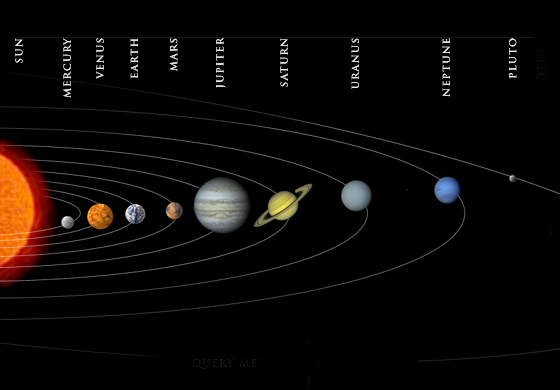The first of Kepler’s laws states that a planet, or any other object in orbit around the Sun, follows an elliptical path with the Sun at one focus. The shape of these ellipses depends on the Sun’s mass, the planet’s position and velocity. A set of six numbers, called the Keplerian elements, can be used to specify the exact path that a planet traces out.
The second of Kepler’s laws says that a planet in orbit traces out equal areas in equal times. If you draw a line from the planet to the Sun, and add up the area which the line sweeps over during a given time interval, it is always constant. This law is a consequence of the conservation of angular momentum; if the planet is moving faster, it also must be closer to the Sun. The increase in the area covered from the larger angular motion, and the decrease in the area covered from the shorter distance, must exactly cancel each other.
The third law states that the square of the period of the orbit must be directly proportional to the cube of the orbit’s semi-major axis. The semi-major axis is half of the total distance between the perihelion, or closest approach to the Sun, and the aphelion, or farthest distance from the Sun. A planet very far from the Sun, such as Neptune, has a much larger orbit; it also moves more slowly, taking more time to cover the same distance than a planet such as Mercury. The exact relationship between orbital period, semi-major axis, mass, and the gravitational constant was later worked out by Isaac Newton.
These three equations govern the motion of astronomical bodies.
Kepler’s laws were first discovered by the 17th century astronomer Johannes Kepler while analyzing data collected by Tycho Brahe. They are an extension of Copernicus’s earlier heliocentric theory and eventually paved the way for Isaac Newton’s complete theory of how bodies interact.
Newton’s equations of gravity and motion can be used to derive Kepler’s laws, if you assume that there are only two bodies, one of which is fixed, and one of which is orbiting at less than escape velocity. Although Kepler’s laws were originally developed to explain planetary motions, they apply to any body which is in orbit around a much more massive body.




















